Plant Focus: Lavandula
A vibrant and aromatic addition to your landscape
Lavandula is a genus of around thirty different species of plants, and is part of the Lamiaceae family. This family of plants includes many herbs, such as mint, sage, and rosemary. Many plants within the Lamiaceae family feature aromatic foliage, and their oils are widely used for culinary and medicinal purposes.
The foliage of Lavandula is grey-green in colour and linear in shape. From around June/July, it has an abundance of flowers on upright stems in a variety of colours, such as pink, blue, purple, and white.
Native to the Mediterranean, Lavandula is generally easy to grow and copes well with drought. Its highly scented summer flowers are great for pollinators, including bees and butterflies. Its foliage is grey-green in colour and linear in shape. Lavandula works well in a wide range of planting positions, including containers and sunny borders. Ideal for a variety of planting styles, Lavandula is well suited to cottage, wildlife, and gravel gardens.
Key Characteristics:
✓ Evergreen shrub
✓ Height varies from 45cm to 90cm
✓ Thrives in sunny positions
✓ Low maintenance
✓ Ideal planted in containers, borders, and gravel gardens
✓ Drought tolerant
✓ Flowers from June to September
✓ Attracts wildlife
✓ Highly scented
Many species, such as Lavandula angustifolia and Lavandula x Intermedia, are hardy and long-lived. Although, Lavandula stoechas is considered to be less hardy, and requires replacement after a few years.
Producing nectar-rich flowers, Lavandula attracts many pollinators, including bees and butterflies. These pollinators aid in the reproduction of a wide range of plant species, and provide food and shelter to other wildlife and humans. Lavandula is particularly useful to bees as it flowers during the midsummer gap, where they are at their hungriest.
Fun fact
Lavandula was often used within private and public Roman bathhouses due to its pleasant fragrance and antiviral and antibacterial properties.
Different varieties of Lavandula
Lavandula angustifolia
More commonly known as ‘English lavender’, Lavandula angustifolia is a bushy, aromatic shrub with grey-green foliage and dense spikes of violet summer flowers upon long stalks. Growing up to 60cm in height, it’s ideal for edging pathways.
Lavandula angustifolia ‘Hidcote’
A bushy shrub, growing up to 60cm in height, that displays masses of dark purple flower spikes in summer, alongside aromatic grey-green foliage. Adored by bees and other pollinators and is ideal for planting as low hedging or within borders.
Lavandula angustifolia ‘Munstead’
A more compact lavender variety, Lavandula angustifolia ‘Munstead’ grows up to around 45cm in height. It boasts an abundance of aromatic, blue-purple summer flowers with grey-green foliage. A wonderful addition to gravel gardens.
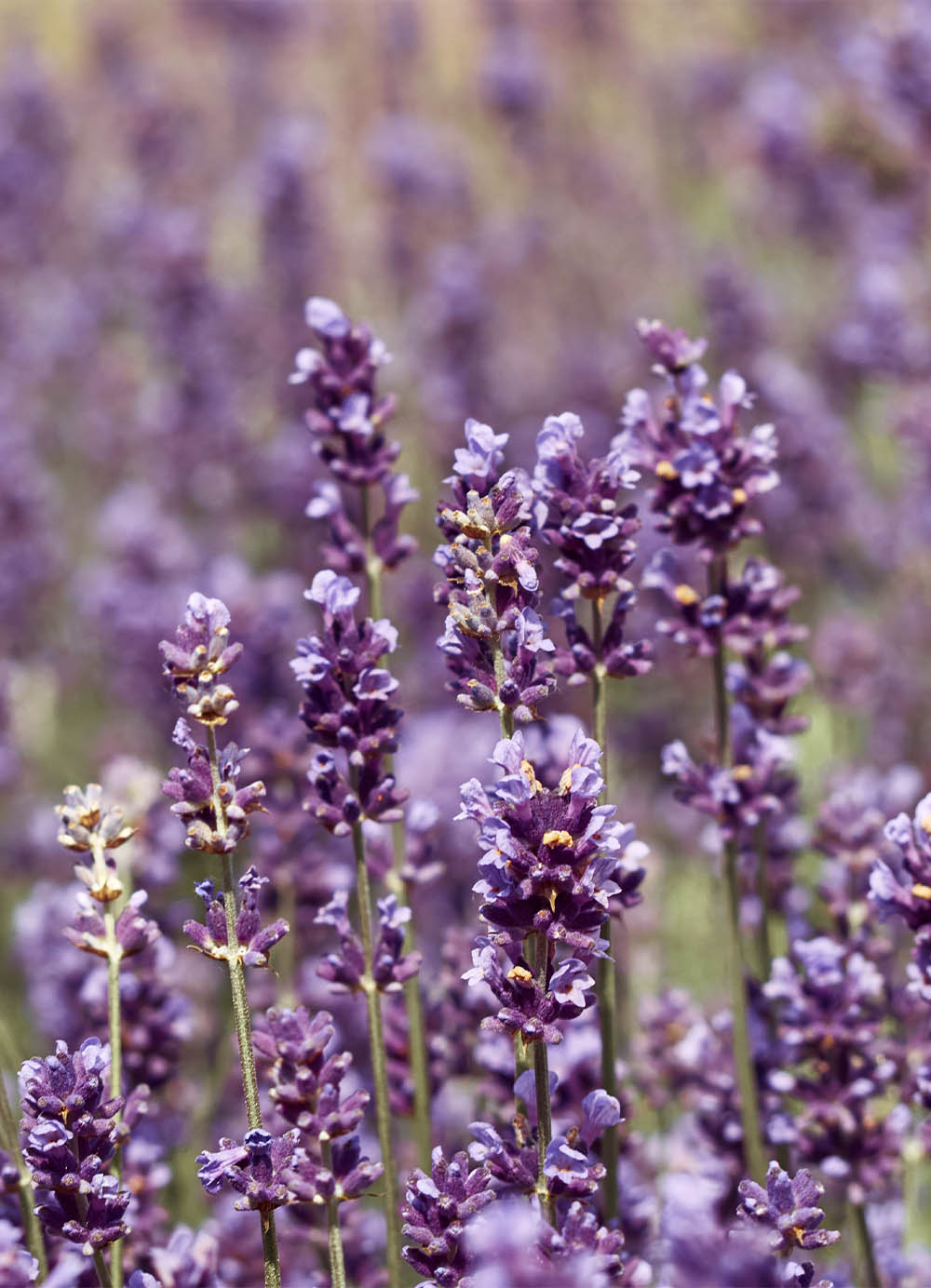
Lavandula angustifolia
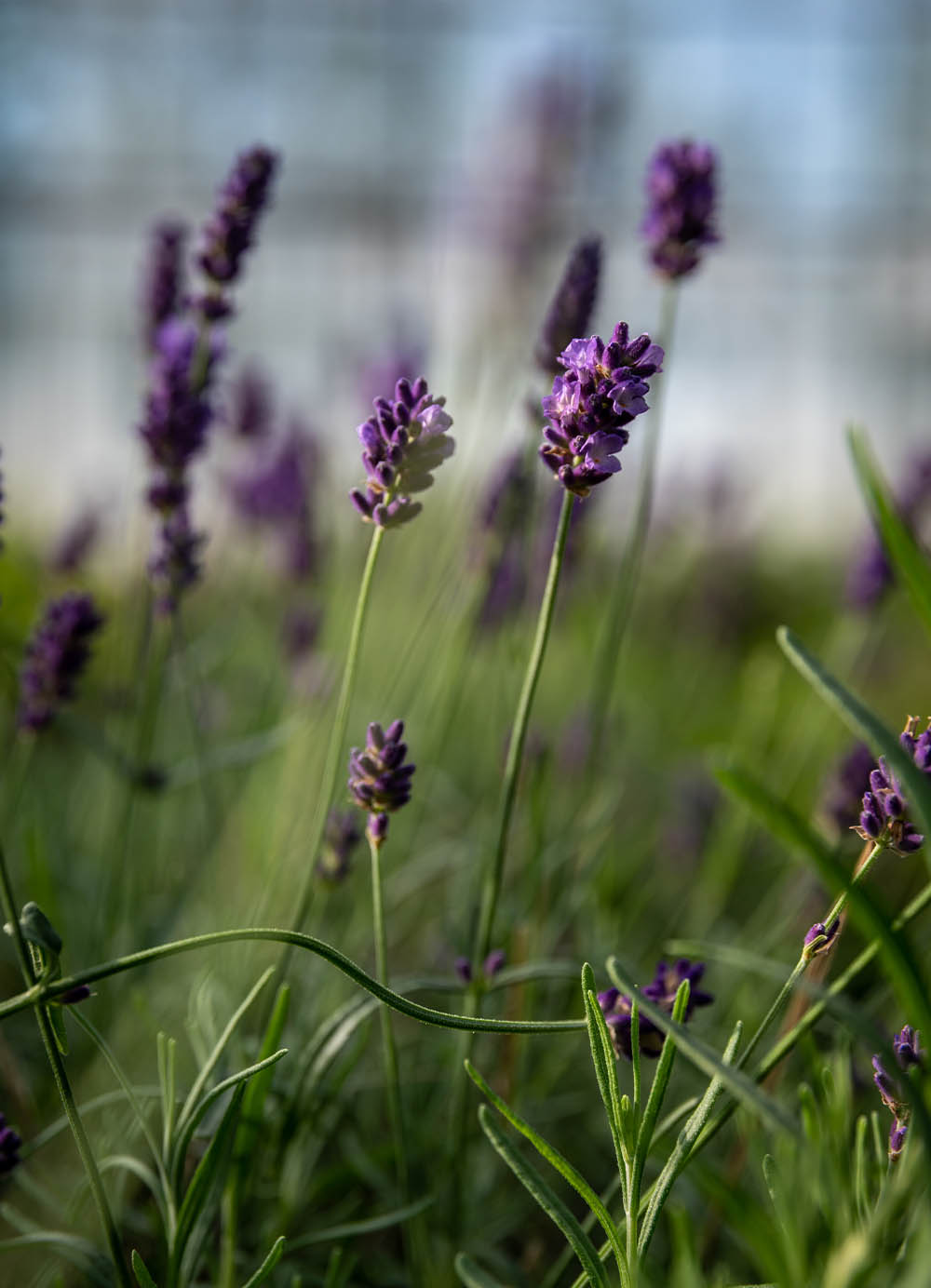
Lavandula angustifolia ‘Hidcote’

Lavandula angustifolia ‘Munstead’
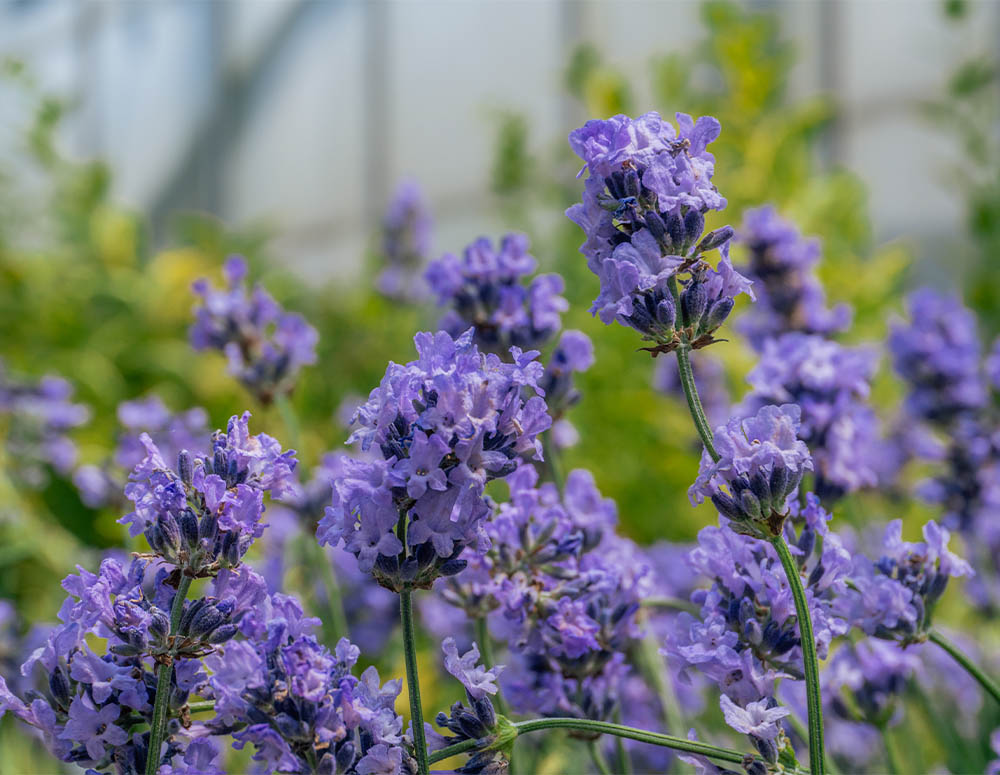
Lavandula angustfolia ‘Dwarf Blue’
Lavandula angustfolia ‘Dwarf Blue’
A compact evergreen shrub with a dense growth habit, with long, widely spaced leaves that give the plant a wispy look. Produces shorter stems with purple flower spikes up to 4.5cm long in summer. This variety is a suitable alternative to traditional English lavender.
Lavandula angustifolia ‘Essence Purple’
Another cultivar of English lavender, this variety tends to flower earlier than traditional English Lavander, and forms a more rounded bush when fully grown. Flowers are a more deep purple. Reaches around 40-50cm as a maximum height when fully grown, within around 2-5 years.
Lavandula angustifolia ‘LesBleus Thierry’
A French cultivar of English lavender named after legendary footballer Thierry Henry. A more compact, spreading variety, which produces flowers at a much earlier age. Flowering will often repeat around 2 months after being trimmed.
Lavandula × Intermedia ‘Grosso’
Lavandula x Intermedia ‘Grosso’ is a larger hybrid variety of Lavandula, growing up to around 90cm in height. This makes it ideal for low hedging, and it also works well in a container or border. This variety features long stems which bear grey-green foliage and clusters of violet flower heads in the summer months.
Lavandula stoechas
Commonly known as French lavender, this sweetly scented species has narrow, aromatic, grey-green foliage alongside spikes of black-purple flower heads with purple bracts, which grow up to around 60cm.
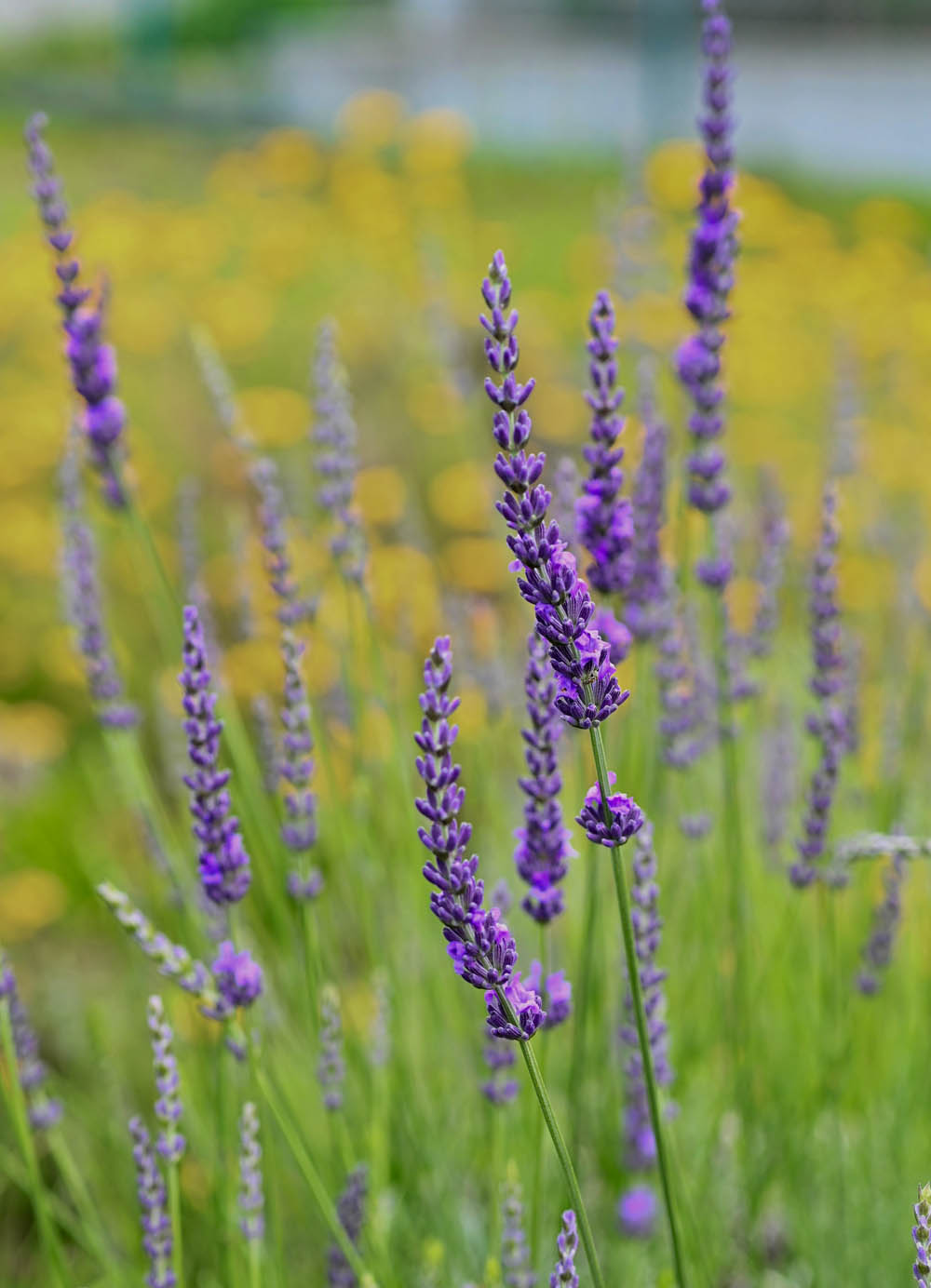
Lavandula angustifolia ‘Hidcote’
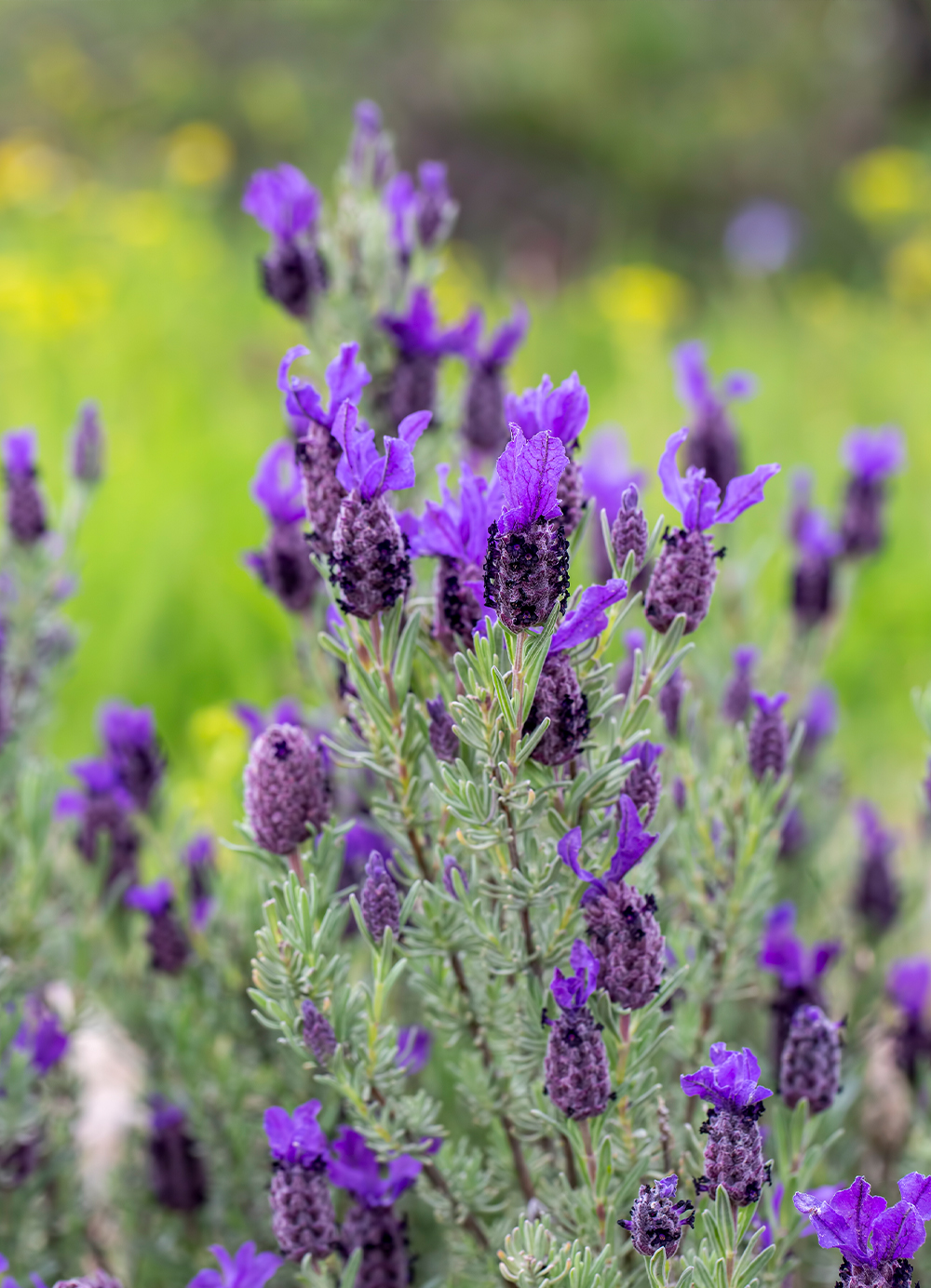
Lavandula stoechas
How to grow and care for Lavandula
Sunny, open positions are ideal for Lavandula, and it works well as low hedging, in borders, or in pots. The tender Lavandula species, such as Lavandula stoechas, are more suited to pots, so they can be moved to safer spots during the colder months. This species should be grown in a sheltered position. Lavandula angustifolia and Lavandula x Intermedia can handle temperatures that reach around -15°C, so these won’t require protection during the winter months.
Lavandula thrives in well-drained, neutral to alkaline soil. It doesn’t do well in soils which can become waterlogged during winter. If soil is acidic, Lavandula stoechas is a good planting option.
Lavandula is best planted in April or May, and requires regular watering throughout spring and summer whilst it is still establishing. Once established, it’s drought tolerant.
To keep Lavandula compact and bushy, and to avoid it becoming too leggy, it can be pruned in April. It’s also recommended to remove faded flower stalks and around one inch of new growth once the flowering period has finished. It’s important to avoid cutting into woody stems, as this can significantly reduce flowering for the following year.
Pests and diseases which affect Lavandula
Lavandula can be prone to a range of pests and diseases, such as rosemary beetle, root rot and grey mould.
Rosemary beetle is a species of leaf beetle that feeds on the flowers and foliage of fragrant plants. Over time holes can develop in leaves and eggs are visible. Spreading rapidly, the rosemary beetle usually doesn’t cause harm, but it can make plants appear unhealthy. To keep populations of rosemary beetle low, remove them by hand. Encouraging other wildlife into your green space, such as birds and frogs, can also help, as these will feed on the larvae.
Root rot is a serious disease that attacks the root system of plants, causing it to reduce its vitality and deteriorate over time. It is a common issue for shrubs and hedges that haven’t been planted in ideal conditions. It presents with dark spots on the leaves, which can turn yellow fairly quickly. If the attack is particularly severe, it often results in the plant dying completely. If root rot is evident, the collar of the plant can be treated with copper salts or metalaxyl. It’s vital to treat neighbouring plants too, to prevent the disease from spreading.
Grey mould is a common fungal disease which affects plants throughout the year, in areas with humid conditions. It colonises all plant tissues by releasing enzymes which destroy plant cells. Foliage turns yellow and wilts, and grey or whitish down develops in the softer areas, eventually leading to death of the plant. To prevent grey mould, ensure not to overwater Lavandula. If it is already present, remove all affected areas and spray with copper salts, such as Bordeaux mixture, every ten days, until symptoms disappear.
If you would like more information on Lavandula varieties we sell, contact the G Team today.

